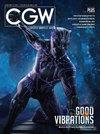Automated generation of flat tileable patterns and 3D reduced model simulation
Q4 Computer Science
引用次数: 1
Abstract
The computational fabrication community is developing an increasing interest in the use of patterned surfaces, which can be designed to show ornamental and unconventional aesthetics or to perform as a proper structural material with a wide range of features. Geometrically designing and controlling the deformation capabilities of these patterns in response to external stimuli is a complex task due to the large number of variables involved. This paper introduces a method for generating sets of tileable and exchange-able flat patterns as well as a model-reduction strategy that enables their mechanical simulation at interactive rates. This method is included in a design pipeline that aims to turn any general flat surface into a pattern tessellation, which is able to deform under a given loading scenario. To validate our approach, we apply it to di ff erent contexts, including real-scale 3D printed specimens, for which we compare our results with the ones provided by a ground-truth solver.自动生成平铺图案和3D简化模型仿真
计算制造社区正在对图案表面的使用产生越来越大的兴趣,图案表面可以被设计成显示装饰性和非传统的美学,或者作为具有广泛特征的适当结构材料。几何设计和控制这些图案在响应外部刺激时的变形能力是一项复杂的任务,因为涉及到大量的变量。本文介绍了一种生成可平铺和可交换平面图案集的方法,以及一种模型简化策略,使其能够以交互速率进行机械模拟。该方法包含在设计管道中,旨在将任何一般平面转换为图案镶嵌,该图案镶嵌能够在给定的加载场景下变形。为了验证我们的方法,我们将其应用于不同的环境,包括真实规模的3D打印样本,我们将我们的结果与地面真相求解器提供的结果进行比较。
本文章由计算机程序翻译,如有差异,请以英文原文为准。
求助全文
约1分钟内获得全文
求助全文

 求助内容:
求助内容: 应助结果提醒方式:
应助结果提醒方式:


